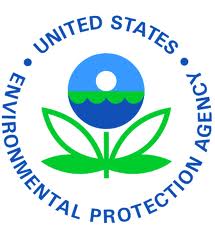 |
The U.S. Environmental Protection Agency’s (EPA) Significant New Alternatives Policy (SNAP) program is the central clearinghouse for alternative refrigerants for all covered industry sectors. Through the program, alternative substances are submitted for agency review before acceptance and publication. The review looks at each substance separately for its ozone-depletion potential, global warming potential, and workplace and environmental exposure potential.
The SNAP program also makes all alternative substance determinations specific to each individual substance as a substitute for a specific ODS intended for a specific end use. For example, within the refrigeration and air conditioning sector, HFC-134a is acceptable as a substitute for CFC-12 in new and retrofitted household refrigerators. Acceptable substitutes are listed by end-use.
The EPA has designated ODSs as either Class I or Class II substances. Class I substances have an ozone-depletion potential (ODP) of 0.2 or higher, while Class II substances have an ODP of less than 0.2. “The ODP is the ratio of the impact on ozone of a chemical compared to the impact of a similar mass of CFC-11.” As a result, alternative coolant substances are identified to replace ODSs in Class I or Class II, as appropriate.
Join the thousands of environmental professionals who have counted on the Environmental Manager’s Compliance Advisor newsletter’s practical advice and best practice case studies for over 30 years. Learn More.
Not all substitutes are approved for use across the board, and the SNAP program lists substances in the following four levels of acceptability. In all cases, SNAP determinations apply to the use of a specific product as a substitute for a specific ODS in a specific end use.
1) “Acceptable—This designation means that a substitute may be used, without restriction, to replace the relevant ODS within the end-use specified. For example, HCFC-22 is an acceptable substitute for R-502 in industrial process refrigeration. “
2) “Acceptable Subject to Narrowed Use Limits—This designation indicates that a substitute would be unacceptable unless its use was restricted to specific applications within an end-use. This designation is generally used when the specific characteristics of different applications within an end-use result in differences in risk. Use of the substitute in the end-use is legal only in those applications included within the narrowed use limit.
3) “Acceptable Subject to Use Conditions—This designation means that a substitute would be unacceptable unless it is used under certain conditions. An example is the set of use conditions placed on motor vehicle air conditioning refrigerants, requiring the use of unique fittings and labels and requiring that the original refrigerant be removed before charging with an alternative. Use of the substitute in the end-use is legal provided the conditions are fully met.”
4) “Unacceptable—This designation means that it is illegal to use a product as a substitute for an ODS in a specific end-use. For example, HCFC-141b is an unacceptable substitute for CFC-11 in building chillers. Note that all SNAP determinations apply to the use of a specific product as a substitute for a specific ODS in a specific end-use.”
Your "Peace of Mind" Guide to EPA Regs
Environmental Manager’s Compliance Advisor saves time and worry with concise reports on what the EPA, the DOT, and state regulators are doing and what that means for you.
As noted above, EPA’s method of assigning “a specific product as a substitute for a specific ODS in a specific end use” makes it pretty easy for facilities to determine exactly what their options are when they want to make the change from an ODS to an alternative. It is important to remember, however, that systems containing ODSs require the use of appropriately certified technicians for service operations, whether the system is a car air conditioner or a restaurant freezer, and even if you are changing over to an alternative refrigerant.
Another consideration is that although a substance may make the list of non-ODS alternative refrigerants, that does not necessarily mean it is not regulated. For example, ammonia (now called R-717 ) has been used since the mid-1800s as a refrigerant and is making a comeback as a refrigerant of choice. However, ammonia also presents significant health and safety concerns so exposure to ammonia is regulated. Although the EPA tries to balance all potential risks in its approval process, alternatives may not actually be 100% risk-free so it is the responsibility of the facility to ensure they are in compliance with all applicable regulations.
